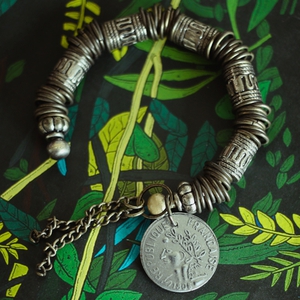国家公派德国维尔茨堡大学博士毕业国内可以找什么工作?
 大搜查
大搜查维尔茨堡大学的研究所
 而民不争
而民不争 踏踏实实
踏踏实实
在维尔茨堡大学诞3361303066生了世界上第一枚物理学诺贝尔奖获得者伦琴,以纪念他对X光射线发现的贡献。其次,还有14名诺贝尔物理学以及化学获奖者从维尔茨堡大学走向世界。17世纪时维尔茨堡的耶稣会修士基里安(Kilian Stumpf)完成了在维大的哲学,伦理学和宗教法的学习后来到中国,成为汤若望的继承者,时任清庭钦天监总管。诺贝尔奖获得者1.Wilhelm Conrad Röntgen伦琴1869-1872物理系助理1888-1900教授1901年获得诺贝尔物理奖:发现X射线2.Emil Fischer 埃米尔·费歇尔 1885-1892 教授 1902年获得诺贝尔化学奖:生物化学的创始人,发现了苯肼,对糖类、嘌呤类有机化合物的研究取得了突出的成就3.Eard Buchner 爱德华·毕希纳 1911-1917 教授 1907年获得诺贝尔化学奖:阐明了发酵过程的化学本质4.Wilhelm Wien 维恩 1900-1920 教授 1911年获得诺贝尔物理学奖:发现维恩位移定律等几个热辐射定律5.Johannes Stark 约翰尼斯·斯塔克 1920-1922 教授 1919年获得诺贝尔物理学奖:发现“斯塔克效应”“斯坦 克-爱因斯坦方程”“斯坦克数”等射线研究中的规律6.Hans Spemann 施佩曼 1894-1906 博士生,教授1935年获得诺贝尔医学奖:蝾螈和蛙的早期发育7.Klaus von Klitzing 克劳斯.冯.克利钦 1969-1980年博士生副教授 1985年获得诺贝尔物理学奖:量子霍尔效应8.Hartmut Michel 哈特姆特·米歇尔 1975-1979年 博士生 博士后 1988年获得诺贝尔化学奖:从事光合作用重要蛋白质的研究,在光合反应中心、需氧呼吸以及细胞色素C氧化酶等方面取得了突出的成就。突破了膜蛋白结晶及其三维空间结构的分析,成功地获得了世界上第一个膜蛋白9.Harald zur Hausen 哈拉尔德·楚尔·豪森 1969-1972年 博士后 副教授 2008年获诺贝尔医学奖:宫颈癌的研究短期工作10.Svante Arrhenius 阿伦尼乌斯 1886-1987 学生 1903年获诺贝尔化学奖:创立电离学说,温度对反应速率的影响,得到被称为指数定律的阿伦尼乌斯公式,提出活化分子和活化能的概念11.Ferdinand Braun 卡尔·费迪南德·布劳恩1872-1874年助理1909年获得诺贝尔物理学奖:阴极射线管的发明12.Walther Hermann Nernst 能斯特 1887年 博士生 1920年获诺贝尔化学奖:热力学第三定律13.Karl Landsteiner 兰德.施泰纳 1892年 研究人员 1930年诺贝尔医学奖:免疫化学的先驱14.Max von Laue 马克思·冯·劳厄 1916年与维恩合作研究,1914年诺贝尔物理学奖:晶体中X射线的衍射现
为什么费歇尔选择在维尔茨堡大学任教?
 对生
对生 小醉拳
小醉拳
1882年,费歇尔接受了艾尔兰根大学的聘请,出任化学教授。两年后又内转到维尔茨堡容大学任教。他之所以选择这所大学,是因为这里为他创造了较好的实验研究条件。在完成教学任务之后,就可以专心致志地从事他所喜爱的实验研究。1883年,德国最著名的化学企业——巴登苯胺和纯碱公司曾以超过任何大学教授收入的年薪10万马克的高薪聘请费歇尔出任公司的研究室主任,尽管他对染料工作很感兴趣,但是不喜欢受拘束地进行科学研究的费歇尔还是拒绝了。在维尔茨堡大学的10年中,他在糖类和嘌呤类化合物的研究中取得了突破性的成就。
能斯特的人物简介
 短后之衣
短后之衣 煎蛋饼
煎蛋饼
瓦尔特·赫尔曼·能斯特(Walther Hermann Nernst),1864年6月25日生于西普鲁士的布里森,1941年11月18日卒于齐贝专勒(Zibelle),德国物属理化学家。1887年毕业于维尔茨堡大学,并获博士学位,在那里,他认识了阿仑尼乌斯,并把他推荐给奥斯特瓦尔德当助手。第二年,他得出了电极电势与溶液浓度的关系式,即能斯特方程。能斯特是一位法官的儿子。他诞生地点离哥白尼诞生地仅20英里。1887年获维尔茨堡大学博士学位,后来当了奥斯特瓦尔德的助手。1889年他作为一个25岁的青年在物理化学上初露头角,他将热力学原理应用到了电池上。这是自伏打在将近一个世纪以前发明电池以来,第一次有人能对电池产生电势作出合理解释。他推导出一个简单公式,通常称之为能斯特方程。这个方程将电池的电势同电池的各个性质联系起来。能斯特的解释已为其他更好的解释所代替,但他的方程沿用至今。
周韧的学历和研究经历
 请行
请行 大荒野
大荒野
1978-1983 浙江医科大学医学系毕业,获学士学位1985-1988 浙江医科大学病理学教研室在职硕士研究版生毕业,获病理学硕士学位权;1993-1994 德国吕贝克医科大学病理研究所访问学者1999-2000 德国维尔茨堡大学病理研究所访问学者1999-2004 获浙江大学医学博士学位2008-2008 美国加利福尼亚大学落杉基分校(UCLA) 高级访问学者
急~~~!!!关于霍耳效应
 周南
周南 畅游者
畅游者
⑴霍尔元件只能测量出平行于法线的磁场分量,测出的值为BCosθ,θ为磁场与专法线的夹角。要判断磁场属B的方向与元件法线方向是否一致,只需慢慢旋转元件,直至测出的值达到最大值,这时方向就是一致。⑵不能,因为交变磁场会产生电动势,影响测量结果。1985年诺贝尔物理学奖授予德国斯图加特固体研究马克斯·普朗克研究所的冯·克利青(Klaus von Klitzing,1943-),以表彰他发现了量子霍耳效应。霍耳效应是 1879年美国物理学家霍耳(Edwin Hall)研究载流导体在磁场中导电的性质时发现的一种电磁效应。他在长方形导体薄片上通以电流,沿电流的垂直方向加磁场,发现在与电流和磁场两者垂直的两侧面产生了电势差。后来这个效应广泛应用于半导体研究。一百年过去了。1980年一种新的霍耳效应又被发现。这就是德国物理学家冯·克利青从金属-氧化物-半导体场效应晶体管(MOSFET)发现的量子霍耳效应。他在硅MOSFET管上加两个电极,把MOSFET管放到强磁场和深低温下,证明霍耳电阻随栅压变化的曲线上出现一系列平台,与平台相应的霍耳电阻等于RH=h/i·e2,其中i是正整数1,2,3,……,这一发现是20世纪以来凝聚态物理学、各门新技术(包括低温、超导、真空、半导体工艺、强磁场等)综合发展以及冯·克利青创造性的研究工作所取得的重要成果。从50年代起,由于晶体管工业的兴盛,半导体表面研究成了热门课题,半导体物理学中兴起了一个崭新领域——二维电子系统。1957年,施里弗(J.R.Schrieffer)提出反型层理论,认为如果与半导体表面垂直的电场足够强,就可以在表面附近出现与体内导电类型相反的反型层。由于反型层中的电子被限制在很窄的势阱里,与表面垂直的电子运动状态应是量子化的,形成一系列独立能级,而与表面平行的电子运动不受拘束。这就是所谓的二维电子系统。当处于低温状态时,垂直方向的能态取最低值——基态。由于半导体工艺的发展,60年代初出现了平面型硅器件,用SiO2覆盖硅表面制成了硅MOSFET管,为研究反型层的性能提供了理想器件。改变MOSFET的栅极电压可以控制反型层中的电子浓度。1966年,美国 IBM公司的福勒(A.B.Fowler),方复(F.F.Fang),霍华德(W.E.Howard)与斯泰尔斯(P.J.Styles)用实验证实了施里弗的理论预见。他们把P型硅作为衬底的MOSFET放在强磁场中,在深低温下测源极与漏极之间的电导。改变栅压VG,测出的电导呈周期性变化,有力地证实了二维电子系统的存在。这个实验激起了物理学家的浓厚兴趣,使二维电子系统成了国际上普遍重视的研究对象。70年代中期,日本东京大学年轻的物理学家安藤恒也(T.Ando)和他的老师植村泰忠(Y.Uemura)从理论上系统地研究了二维电子系统在强磁场中的输运现象,对二维电子系统的霍耳效应作了理论分析。与此同时,世界上有好几个机构在进行有关二维电子系统的实验工作,其中尤以冯·克利青所在的维尔茨堡大学最为积极。冯·克利青1943年6月28日出生于波森(Posen)的叙罗达(Schroda),德国国籍,1962年进入布朗许瓦格(Braunschweig)技术大学攻读物理。他利用假期到联邦技术物理研究所(PTB)的半导体实验室做学生工,在那里他认识了著名的物理学家兰德威尔(G.Landwehr)教授。冯·克利青在工作中丰富了实践经验,开拓了视野,并且对精密测量的重要性有了很透彻的认识,因为联邦技术物理研究所实际上是负责精密计量标准的科研机构。1969年,冯·克利青在凯斯勒(R.Kessler)教授的指导下完成了题为“用光衰减法测量锑化铟中的载流子寿命”的硕士论文。接着跟随兰德威尔教授到维尔茨堡大学物理研究所,在兰德威尔指导下当博士研究生。兰德威尔安排他研究强磁场和液氦温度下处于量子极限的Te单晶的输运特性。在这项研究中冯·克利青发现了所谓的“磁致不纯效应”(magneto-impurity effect)。1972年冯·克利青以优异成绩得博士学位,并留在维尔茨堡大学,当兰德威尔教授的研究助手。兰德威尔教授专门从事半导体输运特性的研究,是联邦德国开展二维电子系统研究的先驱。他们跟西门子公司的研究组有密切联系,而西门子公司在硅MOSFET管的制作上有丰富经验,可以为他们提供高质量的产品以供试验。1976年维尔茨堡大学又新添置了超导磁体(采用Nb3Sn和 NbTi线圈),磁场可达14.6T,为精密测量霍耳电阻作好了物质准备。冯·克利青早在当学生工时就熟悉了强磁场技术,不过那时用的是脉冲式强磁铁,采用高压电容放电,铜线圈用液氮冷却,冯·克利青曾对线圈进行过校准。在研究二维电子系统的过程中,冯·克利青和他的合作者恩格勒特(T.Englert),以及研究生爱伯特(G.Ebert)都曾在霍耳电阻随栅极电压变化的曲线上观察到平台。日本人川路绅治也报导过类似的现象。在1978年中已有多起文献记载了这一特性,当时并没有引起人们的重视,只有冯·克利青敏锐地注意到并作了坚持不懈的研究。他发现 MOSFET的霍耳电阻按 h/e2的分数量子化是在 1980年2月5日凌晨。那时他正在法国格勒诺勃(Grenoble)的强磁场实验室里测量各种样品的霍耳电阻。这个实验室是马克斯·普朗克固体研究所与法国国家研究中心(CNRS)联合建设的,1978年由兰德威尔教授担任实验室主任。恩格勒特随他一起来到格勒诺勃,从事二维电子系统的研究。1979年秋,冯·克利青也来参加。他们拥有一台强达 25 T的磁场设备,比别的地方强得多,得到的霍耳平台也显著得多。他们测量的所有样品都显示有同样的特征,i=4的平台霍耳电阻都等于6450 Ω,正好是 h/4e2。这个值与材料的具体性质无关,只决定于基本物理常数h与e。对于这件事,冯·克利青自己曾说过:“量子霍耳效应的真谛并不在于发现霍耳电阻曲线上有平台,这种平台在我的硕士生爱伯特1978年硕士论文时已发现,只是那时我们不了解平台产生的原因,也没有给出理论解释。我们那时只认为材料中的缺陷严重地影响了霍耳效应。这些结果已经公开发表,大家也都知道,并且大家都能重复。量子霍耳效应的根本发现是这些平台高度是精确地固定的,它们是不以材料、器件的尺寸而转移的,它们只是由基本物理常数h和e来确定的。”当有人问冯·克利青,量子霍耳效应是不是一个偶然的发现?他解释说量子霍耳效应作为一个普遍规律而存在的重大想法是在1980年2月5日凌晨突然闪现出来的,但它是基于长期研究工作之后的一个飞跃。“通过测量大量的不同样品,才第一次可能认识这样一种特殊的规律,而这种平凡重复的测量简直弄得我们感到乏味,我们反复变化样品,变化载流子浓度,将磁场从零扫描到最大……。终于我们发现了这样的特殊规律,所以这一结果的取得是长时间努力工作的结果,这些测量的曲线无时不在我的脑子里盘旋着,反复思考着。”冯·克利青发现量子霍耳效应的确不是偶然的。除了他执着的追求、顽强的探索精神之外,还要归功于他所处的环境。他所在的维尔茨堡大学有着非常良好的学术气氛,对他的研究大力支持,正如他自己所说,“这里既没有研究经费方面的困难,也没有来自行政的干扰,因此我们总是把眼光盯在最高目标上。”与工业界的合作也是他成功的一项重要因素。量子霍耳效应是继1962年发现的约瑟夫森效应之后又一个对基本物理常数有重大意义的固体量子效应。冯·克利青从一开始就意识到这一点。当他确定霍耳平台的阻值是h/e2的分值时,就主动询问联邦技术物理研究所的电气基准部对 h/e2的精确测定有没有兴趣。答复是如果能达到高于10-6的精度就很感兴趣。可是在格勒诺勃精确度仅为1%。于是冯·克利青马上返回维尔茨堡,用那里的超导线圈继续试验,不久就达到了 5×10-6,证明霍耳电阻确实是 h/e2的分值。于是他写了一篇通讯给《物理评论快报》,题为“基于基本常数实现电阻基准”。没有料到,文章被退回,因为该刊编辑认为精确度不够,精确测量欧姆值需要更高的精确度。于是,冯·克利青转向精细结构常数,将论文改写为“基于量子霍耳电阻高精度测定精细结构常数的新方法”,量子霍耳效应第一次公开宣布,得到了强烈反响。1981年,在第二届精密测量与基本常数国际会议上,冯·克利青进一步从理论上论证量子霍耳效应的普遍性,还总结了各种不同类型的硅MOSFET管在强磁场和深低温下测到的霍耳电阻数据,得:h/e2=25812.79±0.04Ω(1.5ppm)并且预言,如果再增大磁场和降低温度,不确定度可小于0.1ppm。在1986年的平差中,霍耳电阻RH取六个最新测量结果的平均值,得RH=25 812.8461(16)ΩBI85(0.062ppm)其中ΩBI85表示国际计量局(BIPM)1985年1月1日标定的欧姆基准值,1ΩBI85=0.999 998 437(50)Ω。由此可得精细结构常数α的倒数为α-1(Ω/ΩBI85)=137.036 2044(85)或α-1=137.035 990 2(85),不确定度为 0.062ppm。这样推算出来的α-1值与 1986年平差结果α-1=137.035 989 5(61)(0.045ppm)精确吻合。量子霍耳效应具有如此之高的精确性和复现性,对于计量工作者的确是一件很值得欢迎的好事。因为如果能够根据量子霍耳效应来定义欧姆,又能够根据约瑟夫森效应来定义伏特,就可以组成一对以基本物理常数为基础的电学基准,使电学单位从实物基准向自然基准过渡。国际计量委员会下属的电学咨询委员会(CCE)在1986年的第17届会议上决定:从1990年1月1日起,以量子霍耳效应所得的霍耳电阻RH=h/e2来代表欧姆的国家参考标准,并以约瑟夫森效应所得的频率-电压比f/UJ来代表伏特的国家参考标准。1988年CCE第18届会议正式建议将第一阶(I=1)霍耳平台相应的电阻值定义为冯·克利青常数,以RK表示,并通过了如下决议:“国际计量委员会……考虑到——大多数现有的实验室所拥有的电阻参考标准随着时间有显著变化,——基于量子霍耳效应的实验室电阻参考标准是稳定的和可复现的,——对大多数新近的测量结果作的详尽研究得到的冯·克利青常数值RK,也就是说,量子霍耳效应中的霍耳电势差除以相当于平台i=1的电流所得的值为 25 812.807 Ω,——量子霍耳效应以及上述RK值,可以用来建立电阻的参考标准,相对于欧姆,它以一个标准偏差表示的不确定度估计为2×10-7,而其复现性要好得多,因此建议——精确地取 25 812.807Ω作为冯·克利青常数的约定值,以RK-90表示之,——此值从 1990年1月1日起。而不是在这以前,由所有以量子霍耳效应为电阻测量标准的实验室使用,——从同一日期开始,所有其它实验室都将自己的实验室参考标准调整为与RK-90一致。并主张——在可预见的未来无需改变冯·克利青常数的这个推荐值。”这项决议已得到国际计量委员会的批准,并公布执行。于是,从1990中1月1日起,世界各国有了统一的国家电阻标准。这个新的标准是以量子霍耳效应为基础,容易复现,不会随时间变化。有必要指出,目前只是由量子霍耳效应获取电阻的实用参考基准,而不是对国际单位制中的欧姆给出新的定义。因为欧姆和伏特一样,在国际单位制中都是导出单位,如果另给它们下定义,就必然与安培的定义,μ0的精确值乃至能量、功率等力学量及千克质量基准的规定不相容。尽管如此,目前的决定在基本物理计量史上仍然是继秒和米的新定义后的又一有重大意义的事件。从1990年1月1日起,还有一个重要的电学量给定了新的标准,这就是电压。新的电压标准是建立在约瑟夫森效应的基础上的。约瑟夫森效应也是一种发生在凝聚态中的量子效应,也是高度精确的。约瑟夫森由于发现了这一效应已于1973年获得了诺贝尔物理学奖。K. Von Klitzing,G. Dorda,M. Pepper于1979年发现,霍尔常数(强磁场中,纵向电压和横向电流的比值)是量子化的,RH=V/I=h/νe2,ν=1,2,3,……。这种效应称为整数量子霍尔效应。进而,AT&T的D. Tsui、H. Stormer和A.Gossard发现,随着磁场增强,在v=1/3,1/5,1/7…等处,霍尔常数出现了新的台阶。这种现象称为分数量子霍尔效应。 R. Laughlin 给出了解释,他认为,由于极少量杂质的出现,整数v个朗道能级被占据,这导致电场与电子密度的比值B/ρ为h/ev,从而导致霍尔常数出现台阶。他还指出,由于在那些分数占有数处,电子形成了一种新的稳定流体,正是这些电子中的排斥作用导致了分数量子霍尔效应。
课外阅读。 X光的发现 1895年的一天夜里,德国物理学家伦琴在维尔茨堡大学的实验室里,
 敦也
敦也 适矢复沓
适矢复沓| 1.虽然……但是……2.(1)说明伦琴试验次数之多。 (2)说明伦琴取得成功回不容易。 3.照相底答片被密封在厚厚的几层黑纸里,不应该曝光的。 4.它被应用于医学和工业领域,帮助医生诊断病情,帮助工程技术人员对机械设备进行无损伤检测。(意思对即可) |
孙玉洁的个人经历
 虚极
虚极 忧真
忧真
孙玉洁,女抄,1958年4月出生。1987年毕袭业于武汉同济医科大学,获医学遗传学硕士学位,同年进入南京医科大学生物学教研室工作。1991年赴德国维尔茨堡大学攻读博士学位,1996年9月获遗传学博士学位。1996年10月赴美国洛杉矶City of Hope National Medical Centre, Beckman研究所工作,2003年元月回国工作,被南京医科大学聘为特聘教授和博士生导师, 医学遗传学和细胞生物学学系主任和学科带头人。回国后的主要研究方向为:(1)肿瘤的表观遗传调控,重点研究原癌基因表达调控与染色质空间结构变化的关系,同时探讨肿瘤细胞基因组的甲基化特征;(2)肿瘤细胞耐药及抗肿瘤的基因工程药物。已主持并完成国家自然科学基金项目、江苏省重点招标项目各一项、江苏省卫生厅重点项目一项,参加973项目一项。目前有在研国家自然科学基金面上项目两项。学术兼职:中国遗传学会表观遗传委员会委员,中华医学会医学细胞生物学分会常务理事,中国环境诱变剂学会理事及致癌专业委员会委员,江苏省遗传学会理事及人类遗传学专业委员会副主任,江苏省细胞与发育生物学会理事,中华医学医学遗传学杂志编委。
求诺贝尔物理学奖获得者威廉·维恩幼年时的故事或事迹。谢谢
 刃牙
刃牙 不亦迂乎
不亦迂乎
维恩1864年1月13日出生在东普鲁士(现俄罗斯)的菲施豪森(Fischhausen),他的父亲卡尔·维恩(Carl Wien)是地主。3661641879年在拉斯滕堡(Rastenburg)、1880年至1882年在海德堡读中学。中学毕业后,1882年在哥廷根大学学习数学,同年转去柏林大学。1883年至1885年在赫尔曼·冯·亥姆霍兹的实验室工作,1886年获得博士学位,论文题目是光对金属的衍射,以及不同材料对折射光颜色的影响。此后,由于维恩的父亲生病,维恩不得不回去帮助管理他父亲的土地。期间他有一个学期跟随亥姆霍兹,1887年完成了金属对光和热辐射的导磁性实验。 一直到1890年,父亲的土地变卖后,维恩回到亥姆霍兹的身边,作为他的助手在国家物理工程研究所工作,为工业课题做研究。1892年在柏林大学获得大学任教资格。1896年前往亚琛工业大学物理学教授,以接替菲利普·莱纳德,1899年在吉森大学任物理学教授,1900年赴维尔茨堡大学接替伦琴,同年出版了教科书《流体力学》(Hydrodynamik)。1902年,他曾被邀请接替玻耳兹曼出任莱比锡大学的物理学教授,1906年又被邀请接替保罗·德鲁德(Paul Drude)出任柏林大学的物理学教授,但他拒绝了这两个邀请。1920年底前往慕尼黑,再次接替伦琴,直到1928年逝世。 1898年与路易丝·梅勒(Luise Mehler)结婚,有4个孩子。威廉·维恩的表弟马克斯·维恩(Max Wien)是高频电子技术的先驱。 诺贝尔奖官方网站关于威廉·维恩生平介绍: Wilhelm Wien The Nobel Prize in Physics 1911 Biography Wilhelm Wien was born on January 13, 1864 at Fischhausen, in East Prussia. He was the son of the landowner Carl Wien, and seemed destined for the life of a gentleman farmer, but an economic crisis and his own secret sense of vocation led him to University studies. When in 1866 his parents moved to Drachstein, in the Rastenburg district of East Prussia, Wien went to school in 1879 first at Rastenburg and later, from 1880 till 1882, at the City School at Heidelberg. After leaving school he went, in 1882, to the University of Göttingen to study mathematics and the natural sciences and in the same year also to the University of Berlin. From 1883 until 1885 he worked in the laboratory of Hermann von Helmholtz and in 1886 he took his doctorate with a thesis on his experiments on the diffraction of light on sections of metals and on the influence of materials on the colour of refracted light. His studies were then interrupted by the illness of his father and, until 1890, he helped in the management of his father's land. He was, however, able to spend, ring this period, one semester with Helmholtz and in 1887 he did experiments on the permeability of metals to light and heat rays. When his father's land was sold he returned to the laboratory of Helmholtz, who had been moved to, and had become President of, the Physikalisch-Technische Reichsanstalt, established for the study of instrial problems. Here he remained until 1896 when he was appointed Professor of Physics at Aix-la-Chapelle in succession to Philipp Lenard. In 1899, he was appointed Professor of Physics at the University of Giessen. In 1900 he became Professor of the same subject at Würzburg, in succession to W.C. Röntgen, and in this year he published his Lehrbuch der Hydrodynamik (Textbook of hydrodynamics). In 1902 he was invited to succeed Ludwig Boltzmann as Professor of Physics at the University of Leipzig and in 1906 to succeed Drude as Professor of Physics at the University of Berlin; but he refused both these invitations. In 1920 he was appointed Professor of Physics at Munich, where he remained throughout the rest of his life. In addition to the early work already mentioned, Wien worked, at the Physikalisch-Technische Reichsanstalt, with Holborn on methods of measuring high temperatures with the Le Chatelier thermoelements and at the same time did theoretical work on thermodynamics, especially on the laws governing the radiation of heat. In 1893 he announced the law which states that the wavelength changes with the temperature, a law which later became the law of displacement. In 1894 he published a paper on temperature and the entropy of radiation, in which the terms temperature and entropy were extended to radiation in empty space. In this work he was led to define an ideal body, which he called the black body, which completely absorbs all radiations. In 1896 he published the formula of Wien, which was the result of work undertaken to find a formula for the composition of the radiation of such a black body. Later it was proved that this formula is valid only for the short waves, but Wien's work enabled Max Planck to resolve the problem of radiation in thermal equilibrium by means of quantum physics. For this work Wien was awarded the Nobel Prize for Physics for 1911. An interesting point about it is that this theoretical work came from an Institute devoted to technical problems and it led to new techniques for illumination and the measurement of high temperatures. When Wien moved, in 1896, to Aix-la-Chapelle to succeed Lenard, he found there a laboratory equipped for the study of electrical discharges in vacuo and in 1897 he began to work on the nature of cathode rays. Using a very high vacuum tube with a Lenard window, he confirmed the discovery that dean Perrin had made two years earlier, that cathode rays are composed of rapidly-moving, negatively-charged particles (electrons). And then, almost at the same time as Sir J.J. Thomson in Cambridge, but by a different method, he measured the relation of the electric charge on these particles to their mass and found, as Thomson did, that they are about two thousand times lighter than the atoms of hydrogen. In 1898 Wien studied the canal rays discovered by Goldstein and concluded that they were the positive equivalent of the negatively-charged cathode rays. He measured their deviation by magnetic and electric fields and concluded that they are composed of positively-charged particles never heavier than electrons. The method used by Wien resulted some 20 years later in the spectrography of masses, which has made possible the precise measurement of the masses of various atoms and their isotopes, necessary for the calculation of the energies released by nuclear reactions. In 1900 Wien published a theoretical paper on the possibility of an electromagnetic basis for mechanics. Subsequently he did further work on the canal rays, showing, in 1912, that, if the pressure is not extremely weak, these rays lose and regain, by collision with atoms of resial gas, their electric charge along their course of travel. In 1918 he published further work on these rays on the measurement of the progressive decrease of their luminosity after they leave the cathode and from these experiments he deced what classical physics calls the decay of the luminous vibrations in the atoms, which corresponds in quantum physics to the limited ration of excited states of atoms. In this, and other, respects Wien's work contributed to the transition from Newtonian to quantum physics. As Max von Laue wrote of him, his "immortal glory" was that "he led us to the very gates of quantum physics". Wien was a member of the Academies of Sciences of Berlin, Göttingen, Vienna, Stockholm, Christiania and Washington, and an Honorary member of the Physical Society of Frankfurt-on-Main. In 1898 he married Luise Mehler of Aix-la-Chapelle. They had four children. He died in Munich on August 30, 1928. From Nobel Lectures, Physics 1901-1921, Elsevier Publishing Company, Amsterdam, 1967 This autobiography/biography was first published in the book series Les Prix Nobel. It was later edited and republished in Nobel Lectures. To cite this document, always state the source as shown above.威廉·维恩复(Wilhelm Carl Werner Otto Fritz Franz Wien ,1864年1月13日—1928年8月30日)制,德国物理学家,研究领域为热辐射与电磁学等。1893年,维恩经由热力学、光谱学、电磁学和光学等理论支援,发现了维恩位移定律,并应用于黑体等学术理论,揭开量子力学新领域。1911年,他因对于热辐射等物理法则贡献,而获得诺贝尔物理学奖。火星上有一个陨石坑以他的名字命名。出生 1864年1月13日 俄罗斯普里莫尔斯克 逝世 1928年8月30日 德国慕尼黑 研究领域 物理学家 著名 黑体辐射 国籍 德国 居住地 德国 研究机构 吉森大学维尔茨堡大学慕尼黑大学 母校 格奥尔格-奥古斯特格丁根大学柏林大学 导师 赫尔曼·冯·亥姆霍兹 获奖 诺贝尔物理学奖(1911年)

 40004-98986
40004-98986




